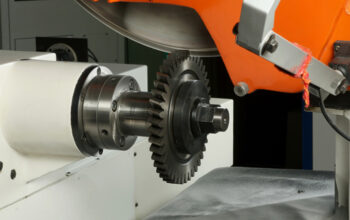Industrial security fencing plays a crucial role in safeguarding assets, ensuring safety and maintaining operational efficiency in various industrial settings. As industries evolve and face new challenges, the importance of robust and adaptable fencing solutions becomes increasingly evident.
The Role of Industrial Security Fencing
Industrial security fencing serves as the first line of defense against unauthorised access, theft, and potential hazards in industrial environments. Key functions include:
- Perimeter Protection: Establishing clear boundaries to prevent unauthorised entry and delineate operational zones.
- Asset Protection: Safeguarding valuable equipment, materials and intellectual property from theft or vandalism.
- Safety Compliance: Ensuring adherence to safety regulations by restricting access to hazardous areas.
- Privacy Maintenance: Protecting sensitive operations and proprietary processes from public view.
Advancements in Industrial Security Fencing
1. Integration of Smart Technologies
The incorporation of smart technologies into industrial security fencing systems is transforming traditional approaches. Modern fences are equipped with sensors, alarms and IoT connectivity, enabling real-time monitoring and immediate response to security breaches. These advancements enhance the overall effectiveness of security measures and provide valuable data for predictive maintenance and operational insights.
2. Modular and Flexible Designs
Traditional fixed fencing solutions are being replaced by modular and flexible designs that can be easily reconfigured to adapt to changing operational needs. Prefabricated panels with quick-connect mechanisms and adjustable post systems allow for efficient installation and modification, accommodating dynamic industrial environments.
3. Sustainable Materials
With growing environmental concerns, there is a shift towards using eco-friendly materials in the construction of industrial security fences. Materials such as recycled plastics and sustainably sourced composites are being utilised to reduce the carbon footprint of fencing solutions while maintaining durability and performance.
Market Trends and Growth
The industrial security fencing market is experiencing significant growth, driven by several factors:
- Increasing Security Concerns: Rising incidents of theft, vandalism, and industrial espionage are prompting industries to invest in robust security measures.
- Regulatory Compliance: Stricter safety and security regulations are compelling industries to implement comprehensive fencing solutions to meet legal requirements.
- Technological Advancements: The adoption of smart technologies and automation in fencing systems is enhancing security capabilities and operational efficiency.
- Global Expansion: Rapid industrialisation in regions like Asia Pacific is driving demand for advanced security fencing solutions.
Applications Across Industries
Industrial security fencing is utilised across various sectors to address specific security needs:
- Oil & Gas: Protecting critical infrastructure and hazardous materials from unauthorised access and potential threats.
- Chemical Manufacturing: Securing facilities that handle volatile substances to prevent accidents and ensure safety compliance.
- Power Generation: Safeguarding power plants and substations against unauthorised entry and potential sabotage.
- Warehousing & Logistics: Protecting storage facilities and distribution centers from theft and ensuring the safety of personnel.
Future Outlook
The future of industrial security fencing lies in continuous innovation and adaptation to emerging challenges:
- Integration with AI and Machine Learning: Leveraging artificial intelligence to analyse data from smart fencing systems for predictive maintenance and threat detection.
- Enhanced Customisation: Developing tailored fencing solutions that meet the unique security requirements of different industries and environments.
- Global Standardisation: Establishing international standards for industrial security fencing to ensure consistency and compliance across borders.
In conclusion, industrial security fencing is an indispensable component of modern industrial operations, providing essential protection and contributing to overall safety and efficiency. As industries continue to evolve, the demand for advanced, adaptable, and sustainable fencing solutions will drive innovation and growth in the sector.











